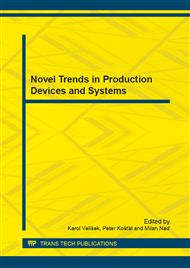p.15
p.21
p.27
p.35
p.42
p.49
p.55
p.61
p.67
On the Analysis and Customization of an iCIM 3000 System: A take on the Material Flow, its Complexity and a few General Issues to Improve
Abstract:
The present paper starts generally describing a few aims and main facilities of an academic-research oriented Institution. However, in essence, the paper mainly offers a step more into the description, analysis, identification of problems and a few customization/initial solution issues of a new iCIM 3000 system In this process, special emphasis is made on the material flow problem. For this, besides offering a description and analysis of the system and its main parts, also some tips on how to define other possible alternative material flow scenarios and a partial analysis of the combinatorial nature of the problem are offered as well; all this is done with the intentions of relating it with the use of simulation tools. For a better comprehension, the previous elements are supported by a few figures and expressions which would help obtaining necessary data. Such data and others will be used in the future, when simulating the scenarios in the search of the best material flow configurations.
Info:
Periodical:
Pages:
42-48
Citation:
Online since:
January 2014
Price:
Сopyright:
© 2014 Trans Tech Publications Ltd. All Rights Reserved
Share:
Citation:


